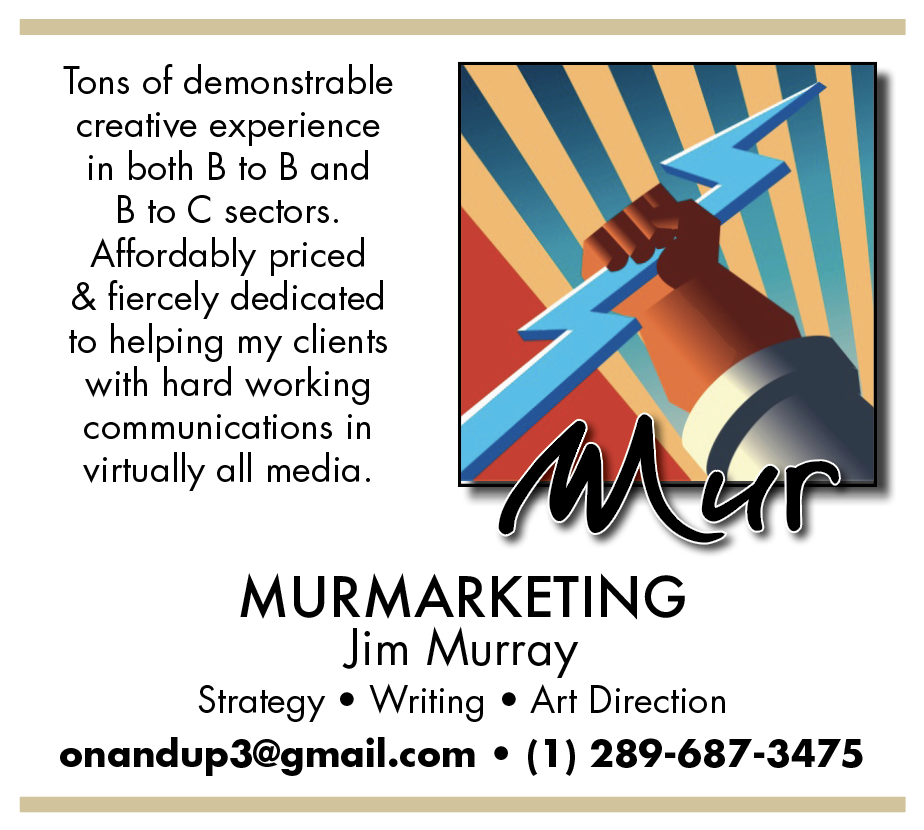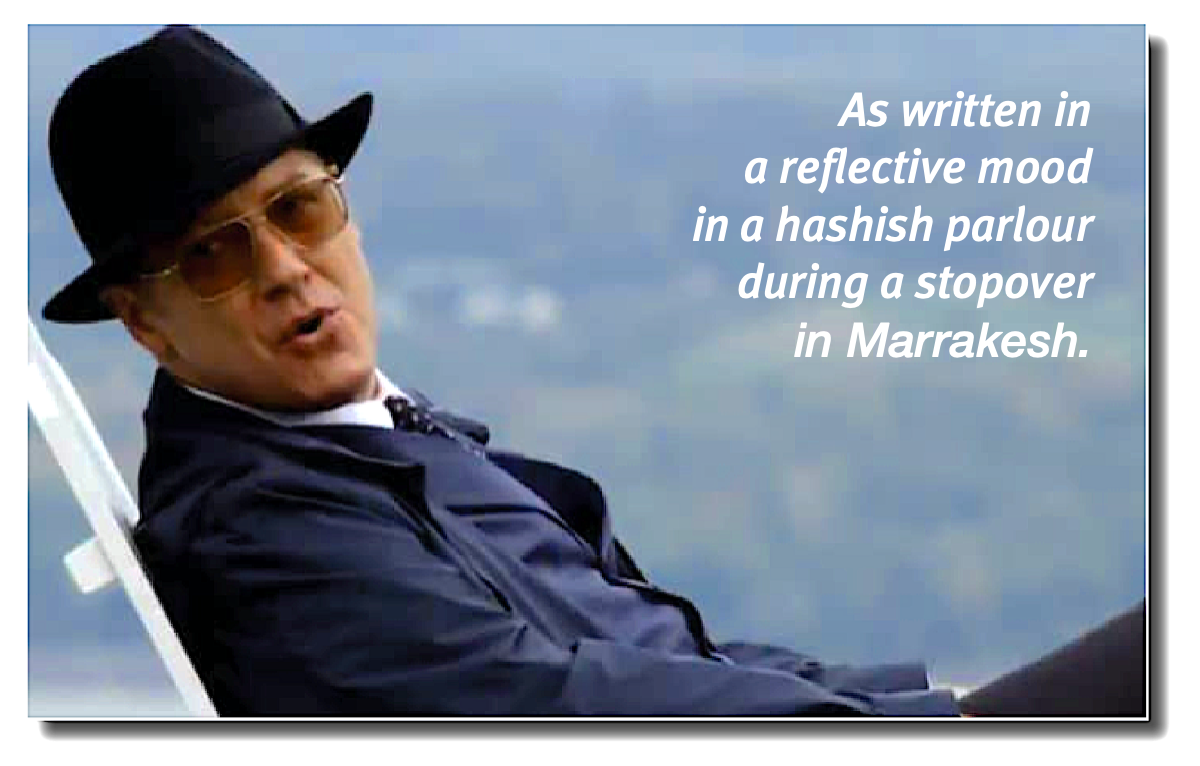Branding Strategy For Authors: Part 2 In A Series

This is the second in a series on branding strategy for authors. But in actuality, it applies to virtually anyone out there working to develop their own business. Other posts in this series can be found at https://ca.bebee.com/bee/jim-murray/posts
************
Who Is Your Customer?
One of the toughest conversations I often have with clients is about the customer. Specifically about the nature of the customer. You might think this sounds silly but I assure you, it happens a lot.
I believe authors are no different. Because everyone who is trying to get business out there falls into the same category. You either know how to go about it the right way, or you struggle.
Most entrepreneurs and business folk can talk about the customer, which they take to mean the company, in general terms. But here’s the thing. A company can’t be a customer. Companies are comprised of people. The customer is NOT the company; rather the people inside of it are. Each person has their own agenda and their own set of responsibilities, and as a result, they will have their own set of characteristics.
Some one who work in finance, for example, will be different from someone who works in marketing or sales or manufacturing. Part of the strategic process for any entrepreneur is to a develop an accurate profile of whatever type of person you are trying to reach within any given organization.
Whether you are selling Business to Business or Business to Consumer, you need to be specific in identifying the people who will be your customers.
In advertising, which is what I have done pretty much my whole adult life, one of the key strategic tools we have is something called brand character. Brand character dictates the tone and manner of the communication. But in order for this tone and manner to be well received, we had to first be able to visualize the individuals in the target audience and make some educated assumptions about them.
I did a lot of packaged goods advertising, and the companies I worked for were religious about research. Not just to test responses to advertising campaigns that promoted their products, but also to gain insights into something more basic which was the need for the product in the first place.
In much the same way, every marketer goes through the same process. Identify the need. Identify and profile the people who have the need. And build your profile into a persona that helps you visualize that person to a greater or lesser extent, so that you can create approaches that will be relatable to them,
This visualization can include things like: Imagining what their day is like, where they live, what they do, keeps them stay up at night, where they go, and who they hang out with. What age they are. What gender they are. Is religion or nationality relevant? Family or no family. Kids or none. What kind of vehicle do they drive. How much do they make. What they do in their spare time. What pressures they face. How much education they have. How much and what sort of experience. Where you would meet them or bump into them. What groups they belong to. How they will use your product or service. What it will do for them. You should also be able to compare and contrast their lives both before and after they use your product or service.
Now all this sounds like a lot of work, but all it really is is a way for you to be able to visualize who you are talking to. When you have a good feel for that, you will be able to have a much more meaningful approach to them. In advertising we used this technique a lot. To a great extent it dictated the creative we developed. And the techniques we used to appeal to the people in out target audience.
Also, once you have a clear picture in your mind of who you are talking to, you should be able to more easily determine the right vehicles to use to reach them. We call that ‘fishing where the fish are.’
You don’t have to answer all of the aforementioned questions, but you should know enough about what your prospects need from you in order for you to make a good case for whatever it is you want them to buy.
The key thing to remember is that you are your own marketing machine. All of your touch-points, once you have made contact with whoever is in your target audience, are going to be conversational. And conversations are so much easier to begin and sustain when you know what to say. And knowing what to say will be that much easier when you have a good idea of the type of person you are talking to.
You are a clever marketer. And clever marketers are always are crystal clear about who their customers are. Full stop.

Articles from Jim Murray
View blog
As the 21st century really starts to take hold, one of the most important places where huge differen ...

Over the past two years, I have, among other things, been writing short stories. There are nine in a ...

1. The quality of your life is only what you make it. We all have the ability to live like good huma ...
Related professionals
You may be interested in these jobs
-
Registered Practical Nurse
Found in: Talent CA C2 - 2 days ago
Lakeridge Health Bowmanville, CanadaDUTIES AND RESPONSIBILITIES: · According to the updated standards and current scope of practice as set out by the College of Nurses of Ontario and the policies of Lakeridge Health, you will assess, plan, implement and evaluate nursing care for patients whose conditions are stabi ...
-

Administrative Assistant
Found in: Talent CA 2 C2 - 2 days ago
CB Canada London, CanadaAgilus is recruiting for a Administrative Assistant in the Education Industry in London, Ontario. This is a contract position until the end of November. You will: · Prioritize workload and assuming daily responsibility with minimal supervision · Work with Microsoft Word and Adob ...
-
test technician
Found in: Talent CA 2 C2 - 40 minutes ago
AMELECO ELECTRIC INC. Burnaby, CanadaEducation: College, CEGEP or other non-university certificate or diploma from a program of 1 year to 2 years · Experience: 2 years to less than 3 years · or equivalent experience · Tasks · Assist in inspecting, testing and adjusting electronic components · Calibrate electronic eq ...


Comments
Fay Vietmeier
1 year ago #4
@Jim Murray
Jim ..
Thanks for the valuable information you share.😇
Have not seen you post for awhile .. hope all is well and you are swimming laps. (getting stronger in a pool is one thing we share)
Who is my customer?
Made me think of a question Jesus ask: who is my neighbor? 😇
That answer is everyone.
As an optimist author - I’d like to say “everyone is my customer” – but I recognize that would not be correct .. many fish – but not the right lure.
Jerry Fletcher
1 year ago #3
Jim, “Fishing where the fish are” is like part 1 of my definition of marketing: “Go where the money is.” That is followed by “Sell what they want to buy.” and “Do it again.” And so it goes.
Jim Murray
1 year ago #2
#1 Thanks Alan It's a little more granular because I wanted it to have wider appeal than just for book writers.
Alan Culler
1 year ago #1
Having worked with business clients fot a lot of my worklife, Jim this certainly makes sense. I have readers in mind for each of my books, but probably not to this leevl of detail.
I think of myself as a reader and know that I would not profile easily -I read many genres, both fiction and non-fiction, bright and positive, dark and negative, contemporary and very old, business and not so much. Is my reader like me? I don't know and having not published there is no data, so anything I'd do would likely just be a guess at this point.
But you have given me a lot to think about.